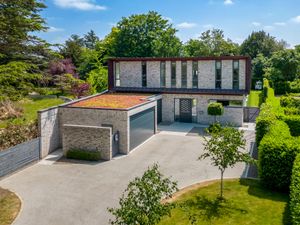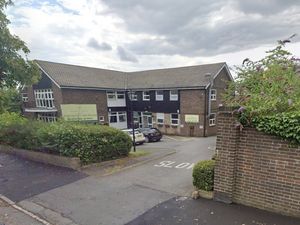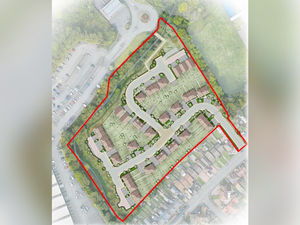Decision on demolition plans for Birmingham indoor market pushed back again
The fate of Birmingham’s Bull Ring Indoor Market building remains up in the air after a decision on plans to demolish it were pushed back once again.
Watch more of our videos on ShotsTV.com
and on Freeview 262 or Freely 565
There was widespread concern last year when developers revealed they wanted to bulldoze the historic market building to make way for housing.
The proposed development for the site in Edgbaston Street would provide up to 745 apartments or up to 1,544 student bedrooms – or any combination of those uses – in the heart of the city.
It would also provide new public realm works, a private central courtyard and roof-top terraces as well as commercial space.
But fears over what could happen to the market traders have lingered.
And the historical importance of Birmingham’s markets were a pressing worry, with one councillor at Thursday's (February 13) meeting questioning whether the proposals were “worth wiping out 900 years worth of history?”
Councillor Jane Jones was among those on the planning committee concerned by the proposals last month, saying at the time: “I’m very worried what’s going to happen to the traders – I don’t think we should move ahead until they’ve got somewhere to move into.”
A report made clear there were plans for a temporary market on the former wholesale market site, which the traders would be moved into.
“The proposed new temporary market should be fully operational by the end of 2026 at the latest,” it said. “It is important to note the majority of traders within the existing indoor market have leases that run until September 2027.”
It said that should ensure there was plenty of time for a “smooth transition” to the new temporary market.
On a longer-term solution, the report highlighted the role of the recently-approved Smithfield scheme, a massive project which is set to transform the former Birmingham wholesale market site.
“It is hoped traders will move into the new permanent market building, which will be provided on the wider Smithfield site,” it said.
But Nick Jackson, area planning manager, acknowledged during the meeting in January that the delivery of the temporary and replacement permanent markets was “contingent on securing funding”.
“I can’t give you a cast-iron guarantee of exactly when the temporary market, if there is going to temporary, and the permanent will be built,” he later said.
“But the timescales with the leases and discussions we’ve had with the Smithfield developer all indicate that it is possible and likely.”
Committee members decided last month to defer a decision on the plans for the first time to seek further reassurance about ‘timescales’.
‘We should preserve the market’
An update, issued ahead of Thursday's planning meeting, said there had been “notable progress” on the Smithfield plans, adding that provided a “greater level of certainty over future market provision”.
It said the council would be submitting an application to the Enterprise Zone for funding to secure the delivery of both the temporary and replacement permanent markets.
“Until such funding is secured, there remains a risk to the delivery plans,” the update acknowledged.
The use of a condition preventing the demolition of the indoor market until a new market is ready, in order to remove that risk, was considered “entirely unreasonable”.
“Whether the temporary and/or permanent market comes to fruition is completely outside the control of the applicant,” it explained. “For example, the success or otherwise of the funding bid would not be down to applicants.”
It added: “There is not considered to be any reasonable mechanism which could 100 per cent guarantee any new indoor market would be completed and operational prior to the demolition of the application site.”
The lack of a ‘cast-iron’ guarantee, as well as the historical importance of the indoor market, left councillors deeply concerned at the meeting on February 13.
“I don’t know how the city has got into a position where Hammerson [the developers behind the proposals] can essentially terminate the city’s use of the market,” Councillor Martin Brooks said.
“What’s being proposed seems to be really inadequate – the temporary market has no funding so we don’t know when or how that’s going to be achieved.”
Councillor David Barker said he was concerned the council could be in a position where there was no space for the traders.
“We can’t guarantee a new space, we can’t guarantee money,” he added.
Councillor Jane Jones said: “We should preserve the market and traders deserve to know where they’re going to be on a temporary basis until their permanent home is built.”
“Is this application worth wiping out 900 years worth of history?” Councillor Gareth Moore added. “I don’t think it is.”
Councillor Philip Davis argued they had a wider responsibility as councillors to “ensure something of great value to the city is not lost".
He put forward a resolution to call on the leader and deputy leader of the council to have discussions with Hammerson and those behind the Smithfield plans to agree a timetable to secure the future of the “ancient indoor market”.
The planning committee also agreed to defer a decision on the proposals for a second time during Thursday's planning meeting.
The benefits of the scheme, according to those who submitted the plans, include new housing, the potential of creating a ‘gateway’ development, public realm enhancements and the use of brownfield land in a ‘highly sustainable’ location.
Hammerson said last year it would be working closely with the city council on timelines for both this project and the Smithfield development.
Harry Badham, chief development and asset repositioning officer, also told the Local Democracy Reporting Service there would be efforts to update the market traders during the consultation process.
“The city’s plan on how to consolidate the markets has been a key part of planning Smithfield,” he said.





